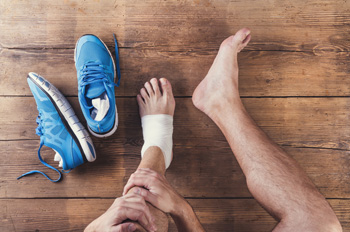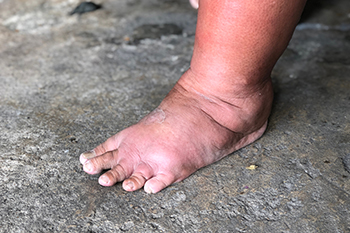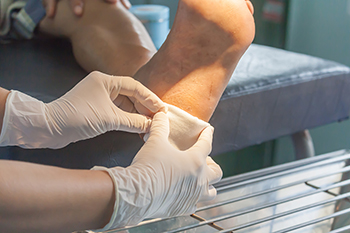
The side of the pinky toe can be an area where a bunion develops. It is referred to as a bunionette, or tailor’s bunion, and may happen from wearing shoes that are too tight. This can cause a misalignment in the metatarsal bone, and the toe ligaments may gradually weaken. The pinky toe may become deformed, as the toe squeezes into the shoes. Additionally, having tight calf muscles may lead to developing a tailor’s bunion, which can be a result of extra pressure that is exerted on the outside of the foot. Mild relief may be found when a protective pad is worn over the bunion, and it can help to wear shoes that have large toe areas. Having surgery performed to permanently remove the bunion may be an option if the pain becomes unbearable. If you have developed a bunionette, it is suggested that you schedule an appointment with a chiropodist who can properly treat this condition.
Bunions progressively worsen over time and may cause walking in your shoes to become difficult. To learn more about bunions, please consult with one of the chiropodists from The Footcare Centre. Our chiropodists will assess your condition and provide you with quality foot and ankle treatment.
What Are Bunions?
A bunion is a bony bump that protrudes from the base of the big toe. Bunions are caused due to a misalignment of the first metatarsal. The characteristic bump of a bunion forms when the metatarsal shifts outwards from its proper position. Bunions develop slowly over time and progressively worsen without treatment. The skin over the bunion may develop calluses due to the friction from shoes. Eventually, a bunion can make walking uncomfortable or even painful. Bunions are one of the most common foot deformities and are especially common in women and older adults.
Symptoms
A bunion appears as a bulging bump on the outside of the base of the big toe.
The bunion may also:
Be swollen, red, or sore
Develop corns or calluses over it
Cause pain
Limit the big toe’s range of motion
Treatment
There are several different treatments available for bunions. Conservative treatment options include wearing shoes with a wider toe box, cushioning the bunion with a specialized pad, wearing shoe inserts, icing the bunion if it becomes inflamed, and taking medications to relieve pain. In more severe cases, more invasive procedures may be done. This may involve removing the swollen tissue around the bunion, straightening the big toe, realigning the bones at the front of the foot, or a combination of these procedures.
If you have any questions, please feel free to contact our office located in . We offer the newest diagnostic and treatment technologies for all your foot care needs





